Dung Truong
EEG Foundation Challenge: From Cross-Task to Cross-Subject EEG Decoding
Jun 23, 2025Abstract:Current electroencephalogram (EEG) decoding models are typically trained on small numbers of subjects performing a single task. Here, we introduce a large-scale, code-submission-based competition comprising two challenges. First, the Transfer Challenge asks participants to build and test a model that can zero-shot decode new tasks and new subjects from their EEG data. Second, the Psychopathology factor prediction Challenge asks participants to infer subject measures of mental health from EEG data. For this, we use an unprecedented, multi-terabyte dataset of high-density EEG signals (128 channels) recorded from over 3,000 child to young adult subjects engaged in multiple active and passive tasks. We provide several tunable neural network baselines for each of these two challenges, including a simple network and demographic-based regression models. Developing models that generalise across tasks and individuals will pave the way for ML network architectures capable of adapting to EEG data collected from diverse tasks and individuals. Similarly, predicting mental health-relevant personality trait values from EEG might identify objective biomarkers useful for clinical diagnosis and design of personalised treatment for psychological conditions. Ultimately, the advances spurred by this challenge could contribute to the development of computational psychiatry and useful neurotechnology, and contribute to breakthroughs in both fundamental neuroscience and applied clinical research.
* Approved at Neurips Competition track. webpage: https://eeg2025.github.io/
From Theory to Application: Fine-Tuning Large EEG Model with Real-World Stress Data
May 29, 2025



Abstract:Recent advancements in Large Language Models have inspired the development of foundation models across various domains. In this study, we evaluate the efficacy of Large EEG Models (LEMs) by fine-tuning LaBraM, a state-of-the-art foundation EEG model, on a real-world stress classification dataset collected in a graduate classroom. Unlike previous studies that primarily evaluate LEMs using data from controlled clinical settings, our work assesses their applicability to real-world environments. We train a binary classifier that distinguishes between normal and elevated stress states using resting-state EEG data recorded from 18 graduate students during a class session. The best-performing fine-tuned model achieves a balanced accuracy of 90.47% with a 5-second window, significantly outperforming traditional stress classifiers in both accuracy and inference efficiency. We further evaluate the robustness of the fine-tuned LEM under random data shuffling and reduced channel counts. These results demonstrate the capability of LEMs to effectively process real-world EEG data and highlight their potential to revolutionize brain-computer interface applications by shifting the focus from model-centric to data-centric design.
Automatic EEG Independent Component Classification Using ICLabel in Python
Nov 20, 2024Abstract:ICLabel is an important plug-in function in EEGLAB, the most widely used software for EEG data processing. A powerful approach to automated processing of EEG data involves decomposing the data by Independent Component Analysis (ICA) and then classifying the resulting independent components (ICs) using ICLabel. While EEGLAB pipelines support high-performance computing (HPC) platforms running the open-source Octave interpreter, the ICLabel plug-in is incompatible with Octave because of its specialized neural network architecture. To enhance cross-platform compatibility, we developed a Python version of ICLabel that uses standard EEGLAB data structures. We compared ICLabel MATLAB and Python implementations to data from 14 subjects. ICLabel returns the likelihood of classification in 7 classes of components for each ICA component. The returned IC classifications were virtually identical between Python and MATLAB, with differences in classification percentage below 0.001%.
Deep learning applied to EEG data with different montages using spatial attention
Oct 16, 2023Abstract:The ability of Deep Learning to process and extract relevant information in complex brain dynamics from raw EEG data has been demonstrated in various recent works. Deep learning models, however, have also been shown to perform best on large corpora of data. When processing EEG, a natural approach is to combine EEG datasets from different experiments to train large deep-learning models. However, most EEG experiments use custom channel montages, requiring the data to be transformed into a common space. Previous methods have used the raw EEG signal to extract features of interest and focused on using a common feature space across EEG datasets. While this is a sensible approach, it underexploits the potential richness of EEG raw data. Here, we explore using spatial attention applied to EEG electrode coordinates to perform channel harmonization of raw EEG data, allowing us to train deep learning on EEG data using different montages. We test this model on a gender classification task. We first show that spatial attention increases model performance. Then, we show that a deep learning model trained on data using different channel montages performs significantly better than deep learning models trained on fixed 23- and 128-channel data montages.
A streamable large-scale clinical EEG dataset for Deep Learning
Apr 13, 2022


Abstract:Deep Learning has revolutionized various fields, including Computer Vision, Natural Language Processing, as well as Biomedical research. Within the field of neuroscience, specifically in electrophysiological neuroimaging, researchers are starting to explore leveraging deep learning to make predictions on their data without extensive feature engineering. The availability of large-scale datasets is a crucial aspect of allowing the experimentation of Deep Learning models. We are publishing the first large-scale clinical EEG dataset that simplifies data access and management for Deep Learning. This dataset contains eyes-closed EEG data prepared from a collection of 1,574 juvenile participants from the Healthy Brain Network. We demonstrate a use case integrating this framework, and discuss why providing such neuroinformatics infrastructure to the community is critical for future scientific discoveries.
Assessing learned features of Deep Learning applied to EEG
Nov 08, 2021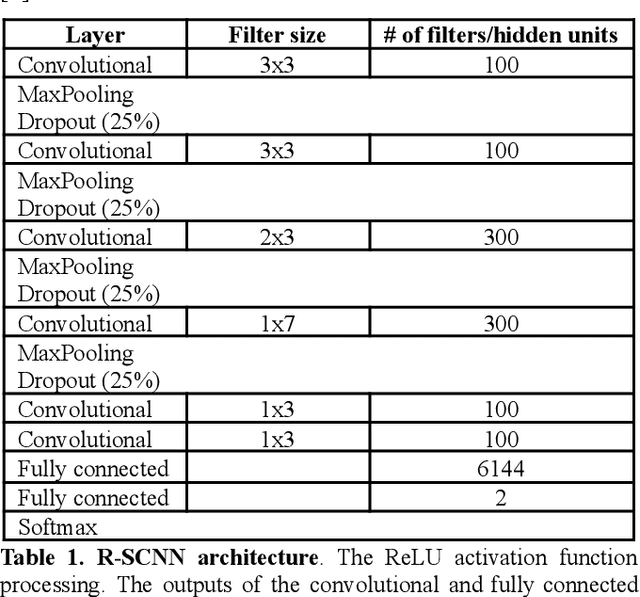
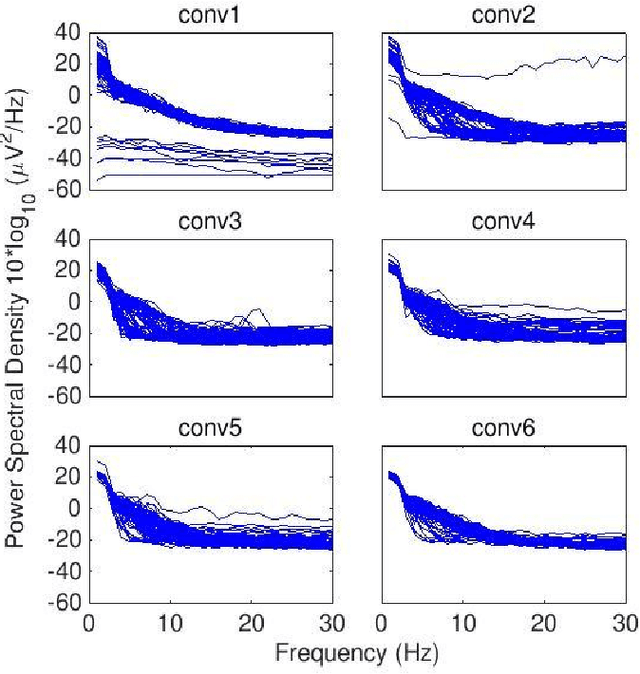
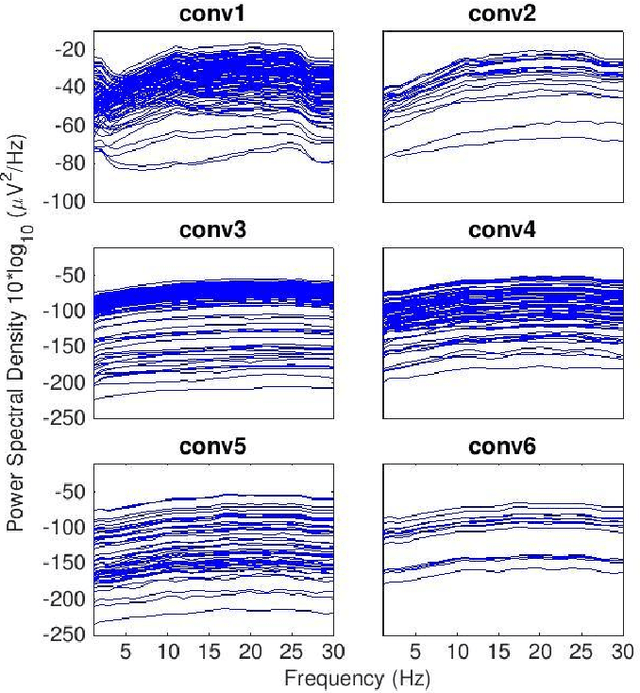
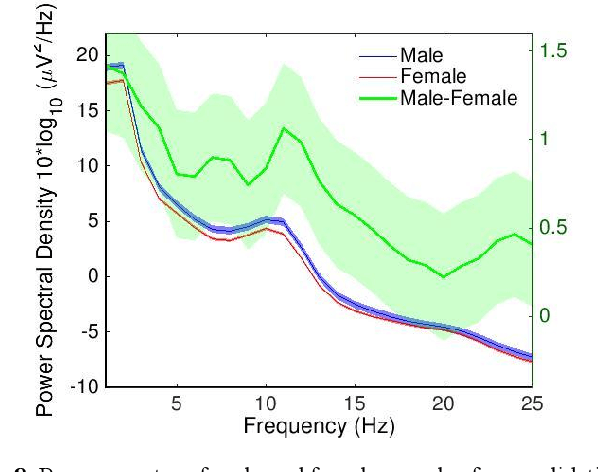
Abstract:Convolutional Neural Networks (CNNs) have achieved impressive performance on many computer vision related tasks, such as object detection, image recognition, image retrieval, etc. These achievements benefit from the CNNs' outstanding capability to learn discriminative features with deep layers of neuron structures and iterative training process. This has inspired the EEG research community to adopt CNN in performing EEG classification tasks. However, CNNs learned features are not immediately interpretable, causing a lack of understanding of the CNNs' internal working mechanism. To improve CNN interpretability, CNN visualization methods are applied to translate the internal features into visually perceptible patterns for qualitative analysis of CNN layers. Many CNN visualization methods have been proposed in the Computer Vision literature to interpret the CNN network structure, operation, and semantic concept, yet applications to EEG data analysis have been limited. In this work we use 3 different methods to extract EEG-relevant features from a CNN trained on raw EEG data: optimal samples for each classification category, activation maximization, and reverse convolution. We applied these methods to a high-performing Deep Learning model with state-of-the-art performance for an EEG sex classification task, and show that the model features a difference in the theta frequency band. We show that visualization of a CNN model can reveal interesting EEG results. Using these tools, EEG researchers using Deep Learning can better identify the learned EEG features, possibly identifying new class relevant biomarkers.
Deep Convolutional Neural Network Applied to Electroencephalography: Raw Data vs Spectral Features
May 11, 2021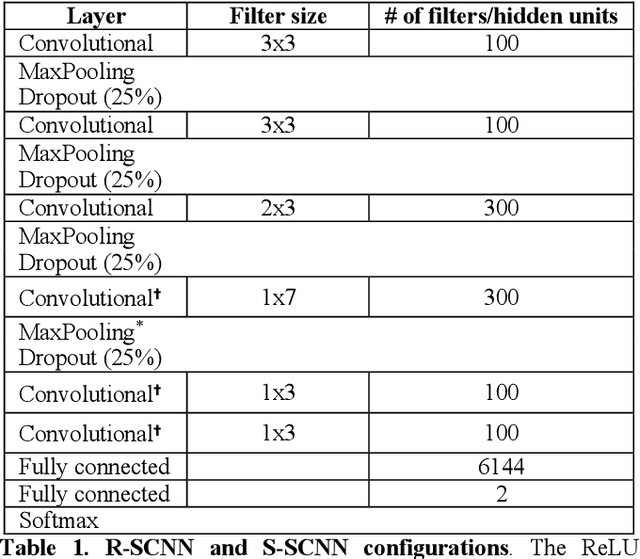

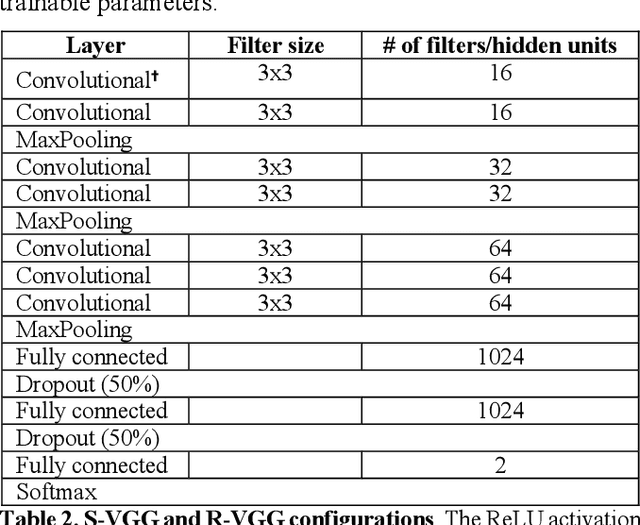
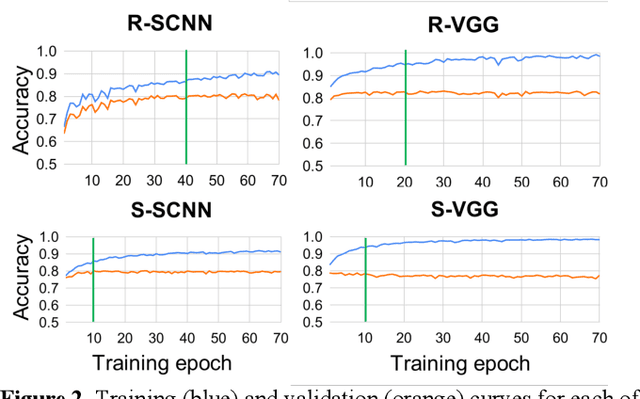
Abstract:The success of deep learning in computer vision has inspired the scientific community to explore new analysis methods. Within the field of neuroscience, specifically in electrophysiological neuroimaging, researchers are starting to explore leveraging deep learning to make predictions on their data without extensive feature engineering. This paper compares deep learning using minimally processed EEG raw data versus deep learning using EEG spectral features using two different deep convolutional neural architectures. One of them from Putten et al. (2018) is tailored to process raw data; the other was derived from the VGG16 vision network (Simonyan and Zisserman, 2015) which is designed to process EEG spectral features. We apply them to classify sex on 24-channel EEG from a large corpus of 1,574 participants. Not only do we improve on state-of-the-art classification performance for this type of classification problem, but we also show that in all cases, raw data classification leads to superior performance as compared to spectral EEG features. Interestingly we show that the neural network tailored to process EEG spectral features has increased performance when applied to raw data classification. Our approach suggests that the same convolutional networks used to process EEG spectral features yield superior performance when applied to EEG raw data.
 Add to Chrome
Add to Chrome Add to Firefox
Add to Firefox Add to Edge
Add to Edge